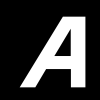Find the Best Home Insurance in Your State
Location is one of the biggest factors that determine home insurance costs. Even the city or community you live in can influence the service you receive or the rate you pay. Shopping locally for home insurance could find a provider that meets your coverage needs at an affordable rate with fast and efficient claims servicing.
Best Home Insurance
Auto-Owners is the best in AL
Birmingham, Huntsville, Mobile, Montgomery
Country Financial is the best in AK
Auto-Owners Insurance is the best in AZ
Chandler, Gilbert, Glendale, Mesa, Phoenix, Scottsdale, Tucson
State Farm is the best in AR
Allstate is the best in CA
Anaheim, Apple Valley, Bakersfield, Chula Vista, Fontana, Fremont, Fresno, Irvine, Lancaster, Long Beach, Los Angeles, Modesto, Moreno Valley, Oakland, Oxnard, Rancho Cucamonga, Sacramento, San Bernardino, San Diego, San Francisco, San Jose, Santa Ana, Santa Clarita, Santa Rosa, Stockton, Torrance
Auto-Owners Insurance is the best in CO
Aurora, Colorado Springs, Denver, Lakewood, Loveland
Chubb is the best in CT
Travelers is the best in DE
Wilmington
Nationwide is the best in FL
Boca Raton, Cape Coral, Coral Springs, Fort Lauderdale, Fort Myers, Gainesville, Hialeah, Jacksonville, Miami, Ocala, Orlando, Pensacola, Port St. Lucie, St. Petersburg, Tallahassee, Tampa
Chubb is the best in GA
State Farm is the best in HI
Honolulu
American Family is the best in ID
Auto-Owners is the best in IL
Auto-Owners is the best in IN
Auto-Owners is the best in IA
Auto-Owners is the best in KS
Kansas City, Olathe, Topeka, Wichita
AAA is the best in KY
State Farm is the best in LA
Baton Rouge, Metairie, New Orleans
Chubb is the best in ME
Chubb is the best in MD
Chubb is the best in MA
Auto-Owners is the best in MI
Chubb is the best in MN
State Farm is the best in MS
State Farm is the best in MO
Chubb is the best in MT
American Family is the best in NE
Nationwide is the best in NV
Las Vegas, Reno, Pahrump, Henderson, North Las Vegas
Amica is the best in NH
Chubb is the best in NJ
Foremost is the best in NM
New York
State Farm is the best in NY
Albany, Buffalo, New York, Syracuse
Auto-Owners is the best in NC
Charlotte, Durham, Fayetteville, Greensboro, Raleigh, Wilmington, Winston-Salem
Agraria Insurance is the best in ND
Fargo
Auto-Owners is the best in OH
Chubb is the best in OK
Oklahoma City, Tulsa
Nationwide is the best in OR
Erie is the best in PA
Lancaster, Philadelphia, Pittsburgh
Amica is the best in RI
Chubb is the best in SC
Charleston, Columbia, Myrtle Beach, Sumter
Auto-Owners is the best in SD
Erie is the best in TN
Chattanooga, Hendersonville, Knoxville, Memphis, Nashville
State Farm is the best in TX
Amarillo, Arlington, Austin, Brownsville, Corpus Christi, Dallas, El Paso, Fort Worth, Garland, Houston, Irving, Laredo, Lubbock, McKinney, Odessa, Plano, San Antonio, Waco
Farmers is the best in UT
Salt Lake City
State Farm is the best in VT
Chubb is the best in VA
Arlington, Chesapeake, Norfolk, Richmond, Virginia Beach
Chubb is the best in WA
Erie is the best in WV
Chubb is the best in WI
Allied is the best in WY
Find the Cheapest Home Insurance in Your State
Location is one of the biggest factors that determine insurance costs, so the cheapest insurer in one state might be the most expensive in another. Comparing home insurance rates in your state using MoneyGeek's data can help you find an affordable option if your focus is saving on your monthly bill.
Cheapest Home Insurance
Farmers is the cheapest in AL
Birmingham, Huntsville, Mobile, Montgomery
Country Financial is the cheapest in AK
ASI is the cheapest in AZ
Chandler, Gilbert, Glendale, Mesa, Phoenix, Scottsdale, Tucson
Travelers is the cheapest in AR
Allstate is the cheapest in CA
Anaheim, Apple Valley, Bakersfield, Chula Vista, Fontana, Fremont, Fresno, Irvine, Lancaster, Long Beach, Los Angeles, Modesto, Moreno Valley, Oakland, Oxnard, Rancho Cucamonga, Sacramento, San Bernardino, San Diego, San Francisco, San Jose, Santa Ana, Santa Clarita, Santa Rosa, Stockton, Torrance
Chubb is the cheapest in CO
Aurora, Colorado Springs, Denver, Lakewood, Loveland
ASI is the cheapest in CT
Nationwide is the cheapest in DE
Wilmington
Travelers is the cheapest in FL
Boca Raton, Cape Coral, Coral Springs, Fort Lauderdale, Fort Myers, Gainesville, Hialeah, Jacksonville, Miami, Ocala, Orlando, Pensacola, Port St. Lucie, St. Petersburg, Tallahassee, Tampa
Farmers is the cheapest in GA
Allstate is the cheapest in HI
Honolulu
MetLife is the cheapest in ID
Allstate is the cheapest in IL
Nationwide is the cheapest in IN
Travelers is the cheapest in IA
Travelers is the cheapest in KS
Kansas City, Olathe, Topeka, Wichita
Travelers is the cheapest in KY
State Farm is the cheapest in LA
Baton Rouge, Metairie, New Orleans
MetLife is the cheapest in ME
Travelers is the cheapest in MD
State Farm is the cheapest in MA
Chubb is the cheapest in MI
Chubb is the cheapest in MN
Travelers is the cheapest in MS
AAA is the cheapest in MO
Chubb is the cheapest in MT
Nationwide is the cheapest in NE
Travelers is the cheapest in NV
Las Vegas, Reno, Pahrump, Henderson, North Las Vegas
Travelers is the cheapest in NH
Chubb is the cheapest in NJ
Travelers is the cheapest in NM
State Farm is the cheapest in NY
Albany, Buffalo, New York, Syracuse
Universal North America is the cheapest in NC
Charlotte, Durham, Fayetteville, Greensboro, Raleigh, Wilmington, Winston-Salem
Allstate is the cheapest in ND
Fargo
Travelers is the cheapest in OH
Chubb is the cheapest in OK
Oklahoma City, Tulsa
Farmers is the cheapest in OR
Farmers is the cheapest in PA
Lancaster, Philadelphia, Pittsburgh
State Farm is the cheapest in RI
Allstate is the cheapest in SC
Charleston, Columbia, Myrtle Beach, Sumter
Travelers is the cheapest in SD
Allstate is the cheapest in TN
Chattanooga, Hendersonville, Knoxville, Memphis, Nashville
Universal North America is the cheapest in TX
Amarillo, Arlington, Austin, Brownsville, Corpus Christi, Dallas, El Paso, Fort Worth, Garland, Houston, Irving, Laredo, Lubbock, McKinney, Odessa, Plano, San Antonio, Waco
Farmers is the cheapest in UT
Salt Lake City]
Allstate is the cheapest in VT
Nationwide is the cheapest in VA
Arlington, Chesapeake, Norfolk, Richmond, Virginia Beach
Travelers is the cheapest in WA
Erie is the cheapest in WV
Erie is the cheapest in WI
Allied is the cheapest in WY
Common Questions About Shopping for Home Insurance
Below are the most common questions asked about how to shop for home insurance. Click on each question below to learn more about what kind of coverage you need, how to find the best rate and more.
Shop Home Insurance by Company Reviews
Making the right choice when you shop for home insurance is about more than just coverage and rates. Working with a reputable and financially strong insurance provider will ensure that the company is ready and willing to pay if you file a claim. Click on each of the home insurance companies below to read reviews and learn more.
Best Home Insurance Companies
Cheapest Home Insurance Companies
How to Shop Home Insurance: Home Insurance Buying Guide
Following a plan can help make shopping for home insurance easier. Before you buy home insurance, follow these steps to make sure you get the best coverage for your home at the right price.
- 1
Determine the Right Home Insurance Coverage
There is more to home insurance besides just coverage for the building and its contents. Here are some of the other coverages you may need on your home insurance policy:
- Dwelling: A mandatory coverage based on the value of the structure of the building.
- Personal property: Also called personal belongings coverage, this is the amount needed to replace your personal property in case of a large claim.
- Other structures: This coverage includes any structures on the property not directly attached to the home, like a shed, barn, or pool.
- Personal liability: This coverage protects you if you're sued or someone is injured on your property.
- Medical payments: If someone is hurt on your property, this coverage will pay up to a specified amount for their medical bills.
- Additional living expenses: If you are displaced from your home due to a covered claim, this coverage will pay for a hotel or rental home for you to stay in until your home is repaired.
- Add-ons: These vary by company and can include sewer backup, earthquake or landslide coverage, identity theft coverage and more.
- 2
Collect Your Information
Home insurance companies will collect personal information and data on your home to give you an accurate insurance quote. To make the shopping process easier, get your information ready before you start to request quotes. Here’s a list of items you may need:
- Current policy declarations page (if you have an existing policy)
- Home appraisal
- Home inspection report
- Personal information for you and the household (ages, occupations, etc.)
- Age of household systems (plumbing, heating, electrical, etc.)
- Home details (square footage, number of rooms and bathrooms, type of flooring and wall coverings, etc.)
- Information on other insurance policies you have or need (for discounts)
- An idea of what your personal belongings are worth and their current condition
- Information on any outbuildings on the property (shed, barn, pool)
- Value of any items needing specialty coverage (guns, jewelry, fine art, antiques)
- Mortgage company address and your loan number
- 3
Get Free Online Home Insurance Quotes
The best way to know you’re getting the best deal on home insurance is to get multiple quotes and compare equal coverage. It’s easy to do online, and most home insurance companies offer online quotes, saving you time and money.
MoneyGeek’s quote tool makes it quick and easy for you to enter your information one time and get multiple quotes for home insurance.
Now that you’ve got multiple home insurance quotes, it’s time to compare. Make a note of any coverage, endorsement or exclusion differences, if any, on the quotes.
- 4
Compare Home Insurance Policies
When getting quotes for home insurance, make sure they are comparable, so you know if you are getting the best rate for the right coverage. Here are some things to consider when shopping and comparing home insurance quotes:
- Compare apples-to-apples. Check that the coverages, endorsements and exclusions are the same with all the home insurance companies from where you receive quotes. This is referred to as comparing “apples-to-apples.” Coverages and add-ons can affect the rate differently from company to company, so having the same coverages on each quote can help you make the right choice with the best home insurance company for your needs.
- Consider more than price. The cheapest home insurance coverage isn’t always the best. Price is a significant factor when choosing a home insurance company, but it’s not the only one. Financial stability, claims history, customer service and coverages are just a few things that should also be considered when comparing quotes.
- Be fair. Not all companies are going to fit with your needs. Don’t be afraid to ask questions, especially when one company may not offer the coverage you need, or the rate may be a big difference from another company. It may also help to know the average cost of home insurance in your area, so you have an idea of how much you should expect to pay in your location.
Once you’ve compared quotes and asked any clarifying questions, you’re ready to make a decision. Remember, it’s not all about cost when shopping and comparing home insurance quotes. The company’s reputation, including claims, customer service and financial stability, can help you make the right decision.
- 5
Find Ways to Lower Your Premium
Lowering your premium can be pretty simple, depending on your coverage needs. Ways you can lower your premium include:
- Bundling Policies. Most insurance companies providing home and auto insurance will offer a policy discount if you insure both with them. This may be the largest discount you can get, so if you own a car, it’s worth it to bundle them together.
- Raise Your Deductible. Another way to lower your premium on your home insurance is by raising your deductible. This means you may pay more out of pocket if you file a claim, but you’ll save on your annual premium. If you choose to raise your deductible, make sure you can pay that amount if you have to file a claim.
- Make home improvements. Updating your roof, windows, electrical or plumbing could get you a discount on your home insurance annual premium. Storm mitigation improvements like installing storm shutters may also provide a break on the premium.
- Be smart about submitting claims. Depending on where you live, any claim filed under your home insurance (even if nothing is paid out) can negatively affect your home insurance rates. To get the best premium, don’t file small claims, and speak with your local agent if you have a question about filing a claim. You can file a claim later if the cost is higher than initially thought, as long as you document the process well and don’t throw out any damaged items.
- 6
Finalize the Policy and Arrange Payment
You’ve got your questions answered and made the decision on your home insurance. Now what? It’s time to finalize the policy. Here are some essential things to check before you accept the policy:
- Effective date. This could be your closing date if you purchase a new home or the end date of your current home insurance policy. Whichever date you need, make sure it’s correct on the policy before proceeding.
- Premiums and coverage. Make sure the policy details are correct, including coverages, add-ons and exclusions. Also, check that the premium is the same as what you were quoted.
- Deductible. Another essential factor to check is that the deductible is the right amount for you. In the event of a claim, you’ll have to pay the deductible as your portion of the claim, so you don’t want any surprises then if the deductible is not correct.
If you’re paying the premium yourself, ask about payment plan options if needed. If your mortgage company is responsible, find out the steps required to ensure payment is made on your behalf by the due date.
- 7
Get Ready for Inspection
Most home insurance companies will require an inspection to take place after the policy is bound. This ensures that there is no current damage or deterioration of the home or any obvious attractive nuisance items on the property that could result in a claim. They will also check if a pool is properly secured and the household mechanical systems are up to code.
Any errors or omissions made on the quote and subsequent policy will be relayed back to the insurance company. This is not always a bad thing, and sometimes, mistakes happen. Just because you made a mistake or forgot something doesn’t mean you’re automatically going to be canceled or have your policy rejected.
For example, you may have noted your roof was five years old, but the inspector noted it’s older or some shingles are missing. Or, you forgot to mention you have a burglar alarm, but they saw it, and now you’re entitled to an additional discount on your home insurance policy.
If the inspector finds something that needs to be addressed, they will make a note, and the insurance company will give you a deadline to rectify the situation. This is why it’s essential to gather your information before shopping and ask plenty of questions when getting quotes.
- 8
Shop for Home Insurance Frequently
To make sure you always have the best insurance for your needs and budget, shop for home insurance frequently. Gather and compare quotes at least once a year. This way, you know you are getting the best price for the coverage you need. While some companies offer discounts like loyalty incentives, sometimes the savings are greater with a new company. Don’t automatically stick with the same company and assume you’re getting the best deal. The only way to know if it makes sense to switch home insurance companies is to shop and compare quotes.












